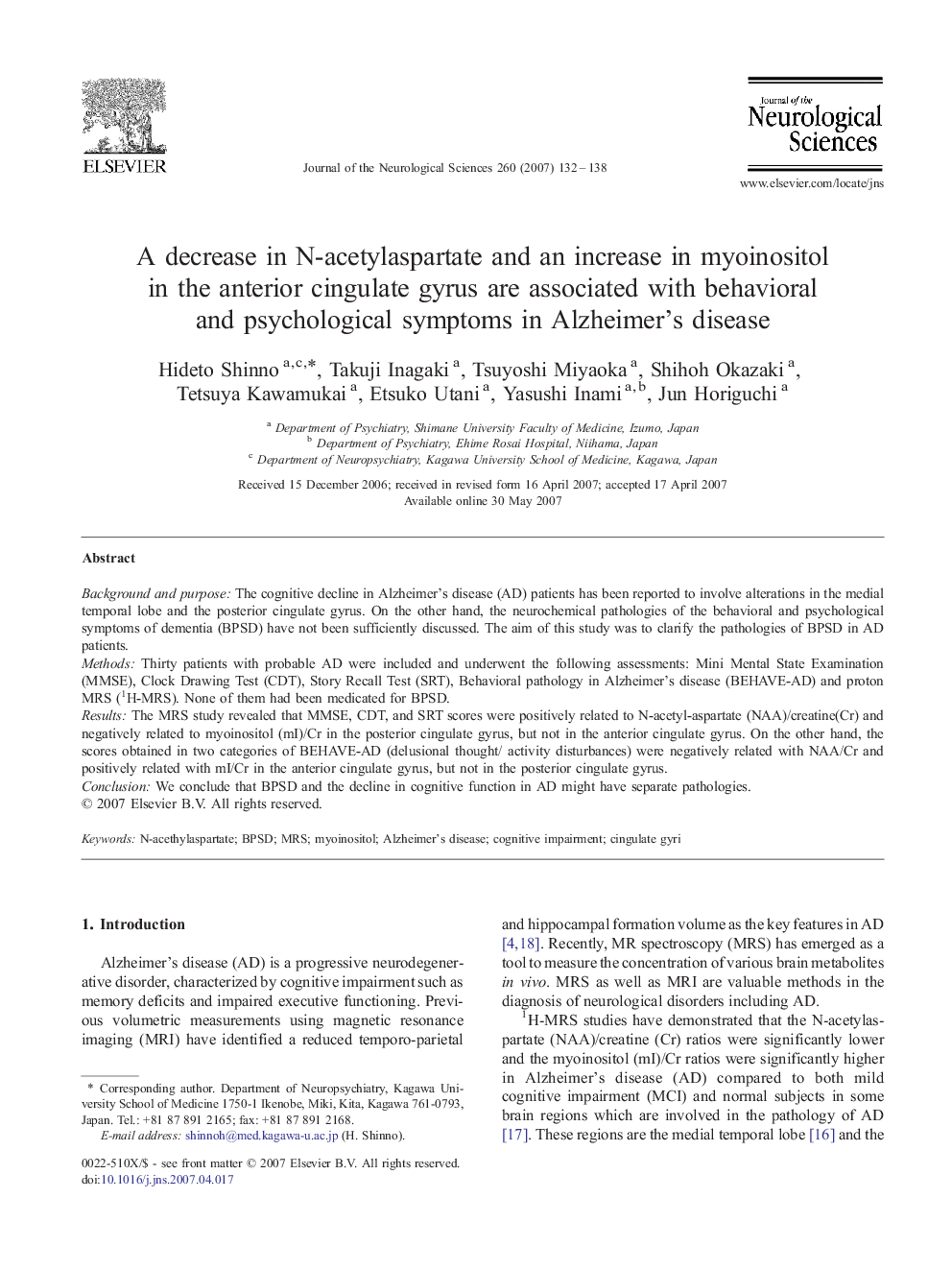| Article ID | Journal | Published Year | Pages | File Type |
|---|---|---|---|---|
| 1916112 | Journal of the Neurological Sciences | 2007 | 7 Pages |
Background and purposeThe cognitive decline in Alzheimer's disease (AD) patients has been reported to involve alterations in the medial temporal lobe and the posterior cingulate gyrus. On the other hand, the neurochemical pathologies of the behavioral and psychological symptoms of dementia (BPSD) have not been sufficiently discussed. The aim of this study was to clarify the pathologies of BPSD in AD patients.MethodsThirty patients with probable AD were included and underwent the following assessments: Mini Mental State Examination (MMSE), Clock Drawing Test (CDT), Story Recall Test (SRT), Behavioral pathology in Alzheimer's disease (BEHAVE-AD) and proton MRS (1H-MRS). None of them had been medicated for BPSD.ResultsThe MRS study revealed that MMSE, CDT, and SRT scores were positively related to N-acetyl-aspartate (NAA)/creatine(Cr) and negatively related to myoinositol (mI)/Cr in the posterior cingulate gyrus, but not in the anterior cingulate gyrus. On the other hand, the scores obtained in two categories of BEHAVE-AD (delusional thought/ activity disturbances) were negatively related with NAA/Cr and positively related with mI/Cr in the anterior cingulate gyrus, but not in the posterior cingulate gyrus.ConclusionWe conclude that BPSD and the decline in cognitive function in AD might have separate pathologies.
